製程中監控
主動型製程控制可以提高精密加工的首件成功率,一次性加工出合格零件。
Productive Process Pyramid™(金字塔生產製程解決方案)製程中監控層的控制元素被嵌入金屬切削過程中。這些主動型控制可以自動回應實體條件、製程中既有的不確定因素和意外事件,進而降低製程的不穩定性。
在切削過程中進行控制
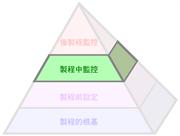 Productive Process Pyramid(金字塔生產製程解決方案)製程中監控層處理加工中既有的不確定因素的來源,例如刀具磨耗和溫度變化,在加工過程中提供智慧回饋和決策。
Productive Process Pyramid(金字塔生產製程解決方案)製程中監控層處理加工中既有的不確定因素的來源,例如刀具磨耗和溫度變化,在加工過程中提供智慧回饋和決策。
這些是應用於金屬切削過程中的主動型控制。
製程中量測能夠 …
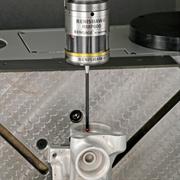 使金屬切削適應加工過程中的不確定因素,例如工件變形、刀具偏轉和熱漂移效應等
使金屬切削適應加工過程中的不確定因素,例如工件變形、刀具偏轉和熱漂移效應等- 根據實際條件,更新座標系、參數、偏置及邏輯程式流程
刀具破損檢測識別 …
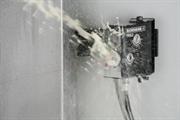 刀具是否存在
刀具是否存在- 刀具位置 — 以確保未發生拉伸情形
- 刀具破損和/或斷刀
主動型控制
主動型製程控制可提高精密加工的首件成功率,一次性加工出合格零件,因此機器不需要過多地留給重工及重製工件使用。
自動化製程中量測意味著機器不再需要等待操作人員的手動指令進行重啟操作。
製程中量測讓您的工具機具備自我判斷與決策能力,進而實現全自動化加工、提高生產效率。
Renishaw 的工件檢測測頭、TRS2 刀具識別系統和 Productivity+™ 軟體能夠自動回饋實際的實體條件及環境條件,適時調整金屬切削作業。
高效製程模式
-
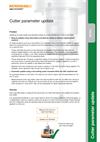 Educational article: (AP301) Productive Process Pattern: Cutter parameter update [en]
Educational article: (AP301) Productive Process Pattern: Cutter parameter update [en]
Productive Process Pattern™ from the in-process control layer of the Productive Process Pyramid™. Use a workpiece inspection probe to measure the actual size of a machined feature and update the relevant tool offset.
-
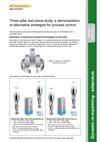 Educational article: (AP302 addendum) Productive Process Pattern: Three pillar test piece: an example of dynamic re-machining [en]
Educational article: (AP302 addendum) Productive Process Pattern: Three pillar test piece: an example of dynamic re-machining [en]
Explanation of machining processes and strategies used to produce the three pillar test piece, and aid in demonstrating the benefits of in-process control.
-
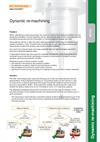 Educational article: (AP302) Productive Process Pattern: Dynamic re-machining [en]
Educational article: (AP302) Productive Process Pattern: Dynamic re-machining [en]
Productive Process Pattern™ from the in-process control layer of the Productive Process Pyramid™. The CNC machining process uses semi-finishing cuts or test cuts (slave features) that are representative of the subsequent finishing cut. The probing system on the machine is used to measure the cut feature and adjust the process through tool offsets to improve final part accuracy (using pattern AP301, Cutter parameter update).
-
 Educational article: (AP303) Productive Process Pattern: Thermal correction - machine drift [en]
Educational article: (AP303) Productive Process Pattern: Thermal correction - machine drift [en]
Productive Process Pattern™ from the in-process control layer of the Productive Process Pyramid™. Use a workpiece inspection probe to locate and measure the position of a critical reference feature in order to detect machine drift, or use an on-machine tool setter to track movement in a machine’s Z-axis caused by thermal effects.
-
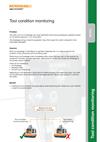 Educational article: (AP304) Productive Process Pattern: Tool condition monitoring [en]
Educational article: (AP304) Productive Process Pattern: Tool condition monitoring [en]
Productive Process Pattern™ from the in-process control layer of the Productive Process Pyramid™. When tool breakage is identified as a significant expected risk, it is useful to monitor the condition of the cutting tools which are being used. Performing a tool breakage check immediately after using a tool can help to infer whether the component has been correctly machined - particularly for components where tool breakage is the primary cause of failure.
-
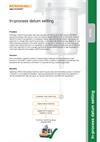 Educational article: (AP305) Productive Process Pattern: In-process datum setting [en]
Educational article: (AP305) Productive Process Pattern: In-process datum setting [en]
Productive Process Pattern™ from the in-process control layer of the Productive Process Pyramid™. Use a workpiece inspection probe to measure datum features then store feature or part locations in the CNC in order to reset a current work coordinate system (WCS), or define a new WCS automatically. This procedure can be carried out whenever it is required during a machining process.
-
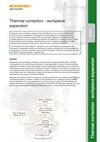 Educational article: (AP306) Productive Process Pattern: Thermal correction - workpiece expansion [en]
Educational article: (AP306) Productive Process Pattern: Thermal correction - workpiece expansion [en]
Productive Process Pattern™ from the in-process control layer of the Productive Process Pyramid™. Use a spindle probe to measure the size of a reference feature in the machine environment and compare it with the known size of that feature at 20 °C. Produce and apply a scaling factor or offsets to subsequent part measurements and proceed with machining operations based on parameters corrected for thermal effects.
文檔
-
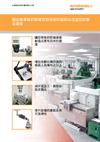 產品型錄: 生產製程控制的量測解決方案
產品型錄: 生產製程控制的量測解決方案
藉由專家級的製程控制技術的協助以改造您的製造量能







